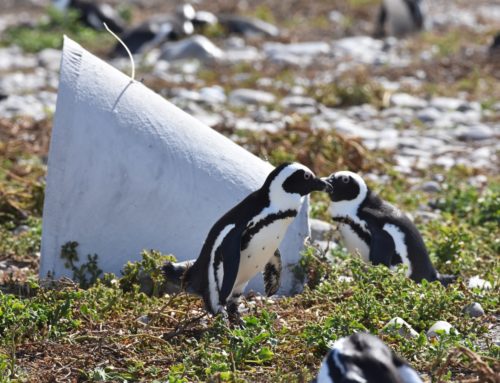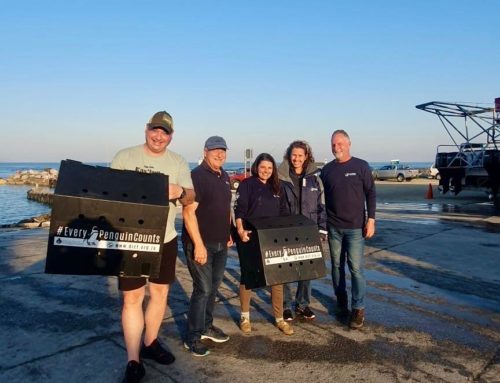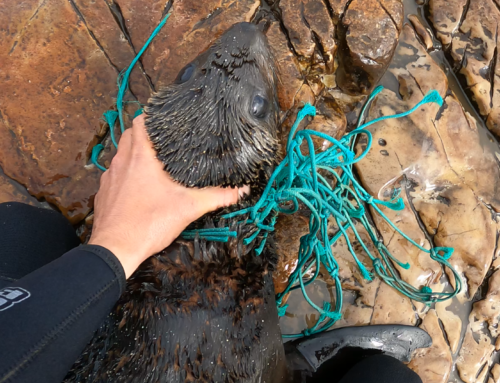International Marine Volunteers help with Ragged tooth shark dissection
February 01, 2017 Alison Towner
By Alison Towner
Marine Biologist, Dyer Island Conservation Trust
On the 31st of January we had a rare opportunity to dissect a Ragged Tooth shark, Carcharias taurus. The shark had washed up dead in Franskraal earlier in the month and was collected by Wilfred Chivell to be frozen and dissected at the International Marine Volunteer (IMV) lodge. The specimen was a 2.56m mature male. Externally he looked healthy, but there was a small knife wound to his head and an injury on the side of his mouth- possibly from a hook. His liver was in good condition and unmarked showing no signs of disease or malnutrition. When we opened his stomach he had clearly fed well, there was a Red roman, and possibly a hake and Strepie inside, as well as a baitfish bag and two metal fishing hooks with wire still attached.
Ragged tooth sharks are listed as vulnerable by IUCN. The females only reproduce from the age of 7 years old at around 2.2m length. What makes their breeding particularly interesting is that around 40 embryos form yet only the strongest one or two pups make it out of their mother alive- after 12 months gestation! This ‘adelpohagy ‘which means ‘to eat ones brother’ is not seen to such an extent in any other species of shark. Also, females only give birth every second or third year. Our IMV volunteers thoroughly enjoyed the learning experience and got involved with measurements as well as dissecting the shark. Small parasite crustaceans known as copepods were sampled from the gills of the shark by the university of Limpopo students and tissue samples were collected for diet and genetics studies.
Local fisherman and skipper Peter du Toit joined us and removed the jaw of the shark to show our volunteers. He explained how he thinks the animal likely died from fighting with an angler. He also described how large male Raggies are commonly seen in warmer coastal waters off Franskraal in summer months- he has personally tagged and released them. We actually know more about the female Raggies distribution in SA, and that they migrate along the east coast annually often returning to cooler cape waters to breed. Much less is known about the males, so to see this specimen was very interesting but as always sad that he was likely removed from our ocean at the hand of man.
“






